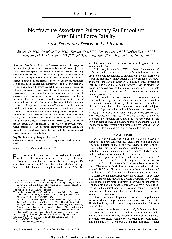摘要
Fatal fat embolism is usually considered a sequel to long-bone fracture, although uncommon cases secondary to soft tissue injury and trauma have been reported. We present the case of a 42-year-old male drug addict who sustained multiple blunt traumatic injuries without skeletal fractures but in whom pulmonary fat embolisms were identified. External examination of the body and forensic autopsy revealed severe, widespread soft tissue hemorrhaging (on approximately 30% of the body surface area) of the limbs, although the thoracic and abdominal viscera were intact. Histological examination of the Sudan III-stained sections of the lungs revealed orange drop-shaped and branching fat emboli. The right and left coronary arteries had signs of moderate atherosclerosis. Toxicological screening of a blood sample revealed a methamphetamine level of 1.05 mu g/mL. We concluded that the immediate cause of death was pulmonary fat embolism, that the primary cause of death is the blunt force trauma, and that methamphetamine abuse and coronary atherosclerosis were contributory. A literature review revealed that the pathophysiologic basis for fat embolism in the absence of any fracture is perhaps a consequence of acutely increased pressure at the trauma site and altered emulsification of blood lipids during shock. This case reminds forensic scientists to consider fat embolism as a cause of death in cases of blunt force injury without fracture. In addition, these patients must be closely monitored while still alive, with other relevant clinical factors identified for better therapeutic effect, thereby decreasing the mortality rate.
- 出版日期2015-6
- 单位司法部司法鉴定科学技术研究所
